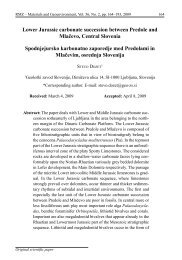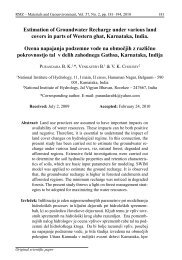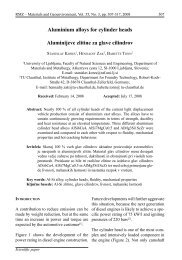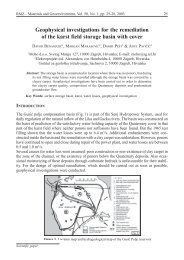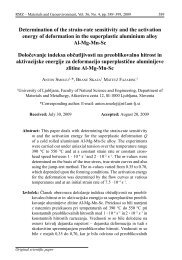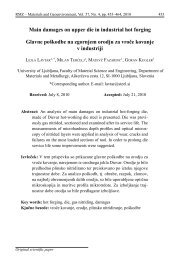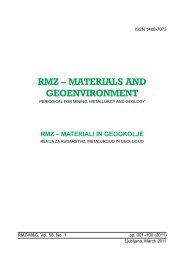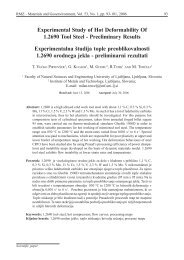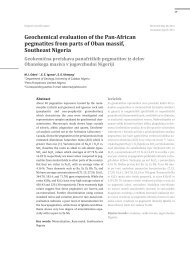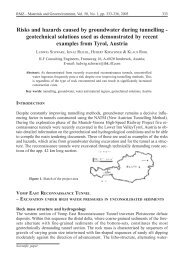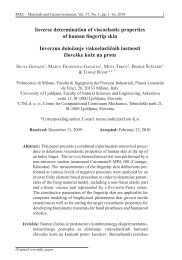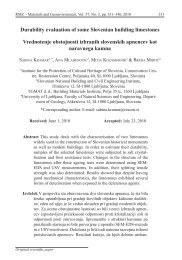RMZ â MATERIALI IN GEOOKOLJE
RMZ â MATERIALI IN GEOOKOLJE
RMZ â MATERIALI IN GEOOKOLJE
- No tags were found...
You also want an ePaper? Increase the reach of your titles
YUMPU automatically turns print PDFs into web optimized ePapers that Google loves.
( ) (( ))[1 + 2(( )) (( ))] ln(1 + (( )) 2(( )))( ) = ln( (( )))(( ))] ln(1 + (( )) 2(( )))340 Kugler, G., Terčelj, M., Peruš, I., Turk, R.for force and l is elongation. From F = ing area of the rod. Since some plasticdeformation occurs always also = (( )))σS, it follows that outside of the working area, this contributesto error. Namely, the slope = = 1 + = of the contour at boundary between(17) outside and inside area is very high. = Therefore the calculated lengths ofrods at initial steps of deformationwhere the constancy of the volume has are too long, and cross-sections arebeen taken into account. Therefore the even smaller than those obtainedforce is maximal when dσ/dε = σ. at the end of deformation. Movingalong the deformed contour resultsFormation of contours during in shortening of calculated lengthstrainingas well as in increasing the minimalcross-section. According to theThe key parameters that for the selectedfunctional model determine how present model the length of the rodaccurate the shape of contour can be initially increases with strain, whichdetermined are the volume V o, which is nonsense. To avoid this inconsistencythe contour was calculated withundergo plastic deformation, and thelocal slopes of the final contour. Of our model only after the calculatedcourse, the last condition is not valid length begins to increase with strain,for the simplest i.e. cylindrical model, before that the contour was calculatedassuming homogeneous defor-since the boundary conditions (7) and(8) cannot be fulfilled. Consequently, mation. The examples of calculationthe shapes of contours calculated by of the rod shapes evolution duringcylindrical model are unrealistic (see deformation for cylinder and for catenaryat temperatures 1000 °C andFigures. 5a and c), but nevertheless, asit will be demonstrated later, this modelgives surprisingly good prediction 0.1 s –1 are shown on Figure 5. If one900 °C, and prescribed strain rate ofof the evolution of the minimal radius wants to calculate the dependenceof the rod within the neck during entire of true stress on strain, the minimaltensile test.cross-section, which is obtained fromreconstruction of contour of the rod,As we mentioned earlier the volume, must be given for every strain. TheV o, is obtained by integration of the dependence of minimal radius onfinal contour of the rod along the z- elongation for two temperatures calculatedby catenary model is givenaxis considering condition r(z) ≤ r o,where r ois initial radius of the work-on Figures 6a and 6b.<strong>RMZ</strong>-M&G 2012, 59



